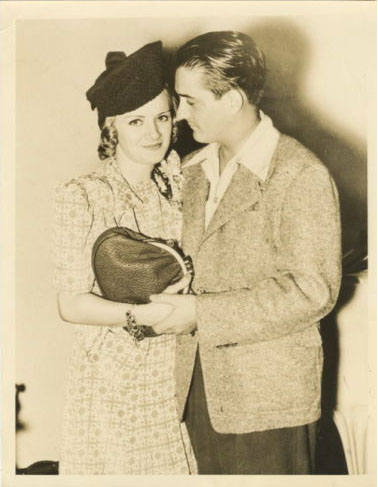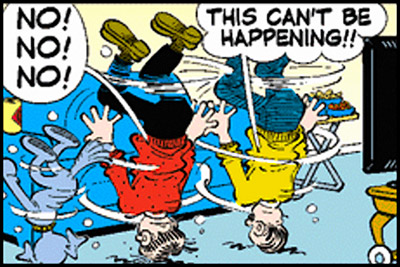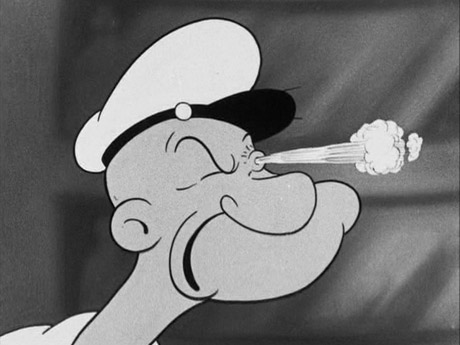More things I did not know: on the right is Jack Mercer, the famed voice of Popeye from 1935–1984, and on the left is Margie Hines, who voiced Olive Oyl from 1938–1943. The two were married in 1939. How romantical!
(Via Cartoon Brew)

More things I did not know: on the right is Jack Mercer, the famed voice of Popeye from 1935–1984, and on the left is Margie Hines, who voiced Olive Oyl from 1938–1943. The two were married in 1939. How romantical!
(Via Cartoon Brew)
A paper in the academic journal Palliative and Supportive Care analyzing perceptions of death and dying through the lens of New Yorker cartoons. Science!
“Personification of Death” (n = 38) included a subtheme of “Bargaining with Death.” The main theme included representations of death with human attributes, such as the Grim Reaper. Examples are the Grim Reaper sitting in a bar talking to another man; the caption reads, “Sometimes I give myself the creeps” (from 2005; Mankoff, 2006. p. 28). The subtheme involved people negotiating for more time to live. Many of the cartoons in this theme show the Grim Reaper standing at someone’s door as he or she tries to negotiate his or her way out of dying. For example, one such caption read, “Couldn’t I do a couple of hundred hours of community service instead?” (from 1990; Mankoff, 2006. p. 46). This can be seen as the legacy of death (Elgee, 2003), that we are all its slaves.
(Via NCBI ROFL)
Animator Patrick Smith offers advice over on Scribble Junkies about drawing hands, an area of life drawing I still struggle with. He rails against both Preston Blair and Burne Hogarth’s popular treatises, and I’d have to agree with him there (I think the Hogarth “dynamic” books stunted my artistic abilities and understanding of anatomy by a few years, personally…).
One of the responses in the comments section rings true: “The drawings of hands you admire were probably drawn by people who looked at hands, not drawings of drawings of hands.”
Yeah, it’s great. A lot of that is the fans that have kept it alive. When people discovered it, they would be such rabid fans of it they would feel like they were the ones that got it. It was a little too obscure for their friends, maybe, but they were the ones that were getting it. A thing about the old comics I always heard was that people would lend them to their friends and never get them back. It was always this process where you’d be trying to turn someone onto it, which I thought was great. So there was a long stretch where I didn’t do anything with Sam & Max and there were fan sites that were keeping them active, so I attribute that [to the fact] they’re still around.
The Onion A.V. Club catches up with and gets a good interview from my favorite cartoonist Steve Purcell to ask him about Monkey Island, Sinistar, and the new season of Telltale’s adaptation of his creation.
Fun fact: one of the first websites I created way back in 1994 was a Sam & Max fan site with a handful of scans from the comics and related ephemera, so I guess I was one of those fans!

The New York Times has up a nice review of the new Charles Addams exhibit at the Museum of the City of New York:
The city street is dark and deserted. The buildings are empty. There are no witnesses. A lone man carrying a briefcase, after a long day at the office perhaps, approaches a subway staircase. Out of the subterranean gloom, a giant human hand protrudes, its index finger beckoning the office worker, inviting him into the depths. His eyes are wide with astonishment, his face showing the hint of a grin, as if the bizarre, illicit invitation were not entirely unwelcome. […]
Above is my personal favorite Addams cartoon, perhaps one of my favorite cartoons of all time. His drawings are often cited as finding their humor and inspiration in the macabre — I think their lasting appeal comes more from his ability to find joy in laughing at and rejecting the bleakness of modern life.

WOW, I’m about four years late on this one, but in case anyone else hasn’t come across this: a fan has collected and cataloged a huge chunk (nearly 7½ hours worth!) of the incidental music from Ren & Stimpy. You know the stuff: the delightfully surreal, atomic age lounge music that defined the series. Don’t miss the smallish image link to Volume 2! The direct download links went dark, but if you poke around towards the bottom of the comments you can probably figure it out…
(spotted via twomuch)
Storyboard artist and animation historian Mark Kennedy on keeping a sketchbook:
I’ve seen artists on the Internet question the necessity for this, saying that you can’t really learn anything about drawing by carrying a sketchbook, and that the drawings you do in a sketchbook are always dashed off, careless and sloppy. […]
The real reason I carry a sketchbook is so that I can record and remember details that I observe. Drawing from real life is the best way to teach yourself how people look, act and move in a naturalistic way (and help you remember it later). Life drawing and studying the work of other artists and animators are great learning experiences, but those things aren’t the same as studying real life. A great life drawing is an amazing feat and you can learn a lot about drawing and anatomy by going to life drawing. But very few life drawings give you a lot of information about the model’s personality and what kind of human being they are. You’re never going to create an original story or character based on a life drawing model you saw.

From today’s Blondie strip, proof that even the boring legacy comics can be delightfully weird and fun sometimes. Maybe they’re trying to out-Sluggo Sluggo?
A circa-1966 industry ad for Leon Maurer’s Animascope process for producing animation on the cheap: animation without drawing and with fewer pesky artists! Similar to but different than rotoscoping, this process used high-contrast photography and actors in contrasty costumes with their skin painted white and contour lines painted on. The performers would then be filmed dancing around under bright light on a black-lined stage, and the resulting photography could be composited onto traditional background plates. Weird, but sort of a primitive version of mocap, and done for the same economical reasons.
(Via Cartoon Brew – for more info on the process, a good place to start might be this comment left by Brew reader Kustom Kool)

Went digging through my archives and came across this, one of my favorite frames from the first year of the original Fleischer Brothers’ Popeye shorts. In a contest of manliness, Bluto smokes an entire cigar in one drag and blows the smoke in Popeye’s face. The sailor retaliates by doing the same but blowing the smoke out of his one good eye. This is what makes animation great, folks!
Here’s a link to the full cartoon: Can You Take It?